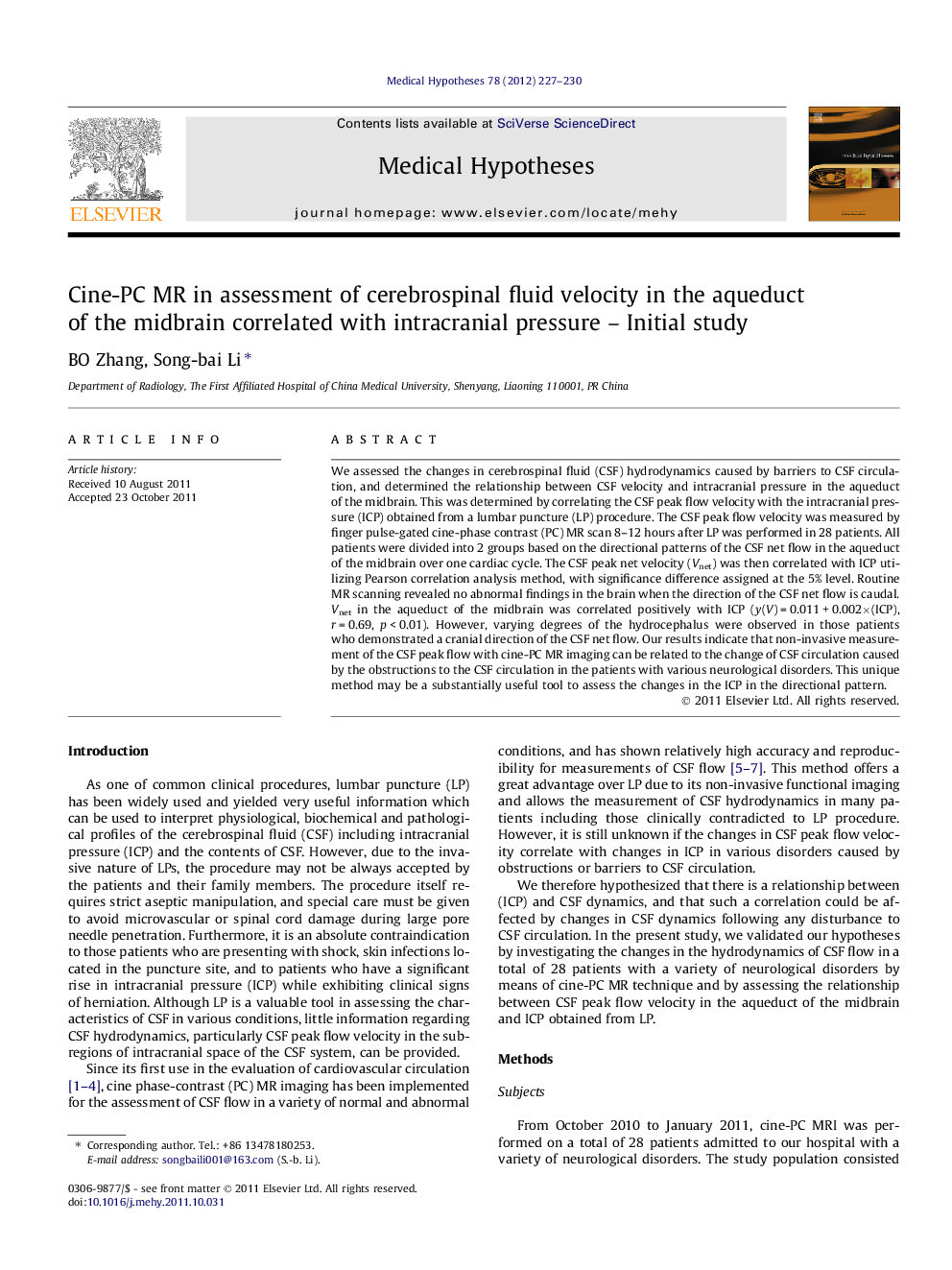| Article ID | Journal | Published Year | Pages | File Type |
|---|---|---|---|---|
| 2489535 | Medical Hypotheses | 2012 | 4 Pages |
Abstract
We assessed the changes in cerebrospinal fluid (CSF) hydrodynamics caused by barriers to CSF circulation, and determined the relationship between CSF velocity and intracranial pressure in the aqueduct of the midbrain. This was determined by correlating the CSF peak flow velocity with the intracranial pressure (ICP) obtained from a lumbar puncture (LP) procedure. The CSF peak flow velocity was measured by finger pulse-gated cine-phase contrast (PC) MR scan 8-12 hours after LP was performed in 28 patients. All patients were divided into 2 groups based on the directional patterns of the CSF net flow in the aqueduct of the midbrain over one cardiac cycle. The CSF peak net velocity (Vnet) was then correlated with ICP utilizing Pearson correlation analysis method, with significance difference assigned at the 5% level. Routine MR scanning revealed no abnormal findings in the brain when the direction of the CSF net flow is caudal. Vnet in the aqueduct of the midbrain was correlated positively with ICP (y(V) = 0.011 + 0.002Ã(ICP), r = 0.69, p < 0.01). However, varying degrees of the hydrocephalus were observed in those patients who demonstrated a cranial direction of the CSF net flow. Our results indicate that non-invasive measurement of the CSF peak flow with cine-PC MR imaging can be related to the change of CSF circulation caused by the obstructions to the CSF circulation in the patients with various neurological disorders. This unique method may be a substantially useful tool to assess the changes in the ICP in the directional pattern.
Related Topics
Life Sciences
Biochemistry, Genetics and Molecular Biology
Developmental Biology
Authors
BO Zhang, Song-bai Li,
